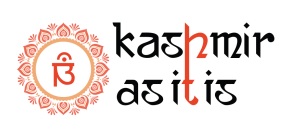f you happen to be in Kashmir on the first day Shukla Paksha of the Chaitra month, you will see Kashmiri Pandits greeting everyone with a warm, hearty ‘Navreh Mubarak!’
The day heralds the New Year as well as the spring season, with the frost giving way to pleasant weather. In Bringesh Samhita — a compendium of the Mahatamayas of all prominent tirthas of Kashmir — there is a chapter on Navreh which mentions a dialogue between Shiva and Parvati, where the goddess is keen to understand the importance of time, cycle of evolution and dissolution. Shiva tells her that on Navreh, Brahma initiated Creation with the first rays of the sun falling on the world.
To celebrate Navreh — beginning of kaal, time and of the world — Kashmiri Hindus worship Shiva, Parvati and their son Ganesha for merit and well-being, wear new clothes, and take part and in cultural programmes. The day begins with looking at Thal Barun, a thaal, plate filled with auspicious items for prosperity. The large plate contains items like paddy, walnuts, sweet roti, cooked rice, curd, pen, book, coins, a piece of gold ornament, salt, seasonal flowers, a medicinal herb called vai and a mirror. Also placed on the plate are the new almanac and a photo of the family deity.
The thaal is prepared the previous night on mavas and covered with a piece of cloth and kept in the prayer room. The next day, well before daybreak, the oldest woman of the house, usually the grandmother or mother, goes around the house waking up family members one by one, asking them to open their eyes and first look at the plate, before beginning their daily chores. Known as Buth Vuchun, the ritual of looking at the plate is said to bring good luck, good health, prosperity, and wisdom.
Each item on the plate has its own significance. While paddy symbolises wealth and expansion, cooked rice stands for progression in life and physical and mental growth. Curd stands for completeness, constancy, and cohesiveness. The sweet roti represents engagement and amalgamation into one’s socio-cultural surroundings. The walnuts indicate the human and universal mind; the conjoined kernels represent the four purusharthas, goals of existence — dharma, discharge of duty; artha, acquirement of wealth; kama, gratification of desire, and moksha, liberation.
The coin stands for material strength and the gold ornament is the symbol of purity. While the medicinal herb indicates good health, flowers represent optimism, fragrance, and sympathy in life. The pen is for wisdom and self-illumination and salt for positive energy. The almanac represents the influence of time in our life and the need to respect time and lead a disciplined life. The Family goddess stands for trust in Her grace. The mirror, due to its attribute of reflection, stands for multiplication of auspiciousness. Later in the day, rice from the plate is used to prepare the traditional yellow rice taher. Sumptuous dishes are prepared for visiting family and friends.
People, before exodus of 1990, also used to visit Hari Parbat in Srinagar to pay obeisance to Goddess Chakreshwari by reciting hymns and praying for a prosperous year ahead. It is believed that on this day, the Sapt Rishis congregate at this place to offer prayers to the Universal Goddess, thus starting the Saptrishi era. After the ritual visit to the temple, people usually head off to enjoy the almond blossoms in the gardens at the foothill. The outing is incomplete without savouring the traditional nadir monje pakoras and kahwa, and wishing everyone ‘Navreh Mubarak’!
The article has been submitted by Sh Sunil Raina Rajanaka to KAII for publishing in application and website. Anyone has any issues with the article please raise it immediately with admin@kashmirasitis.com with valid details.
————————-
Disclaimer – KAII does not hold the responsibility for the authenticity of this article. The writer/author of this writeup is responsible for the content displayed. If anyone has any objections, please raise it immediately to admin@kashmirasitis.com with valid reasons.




